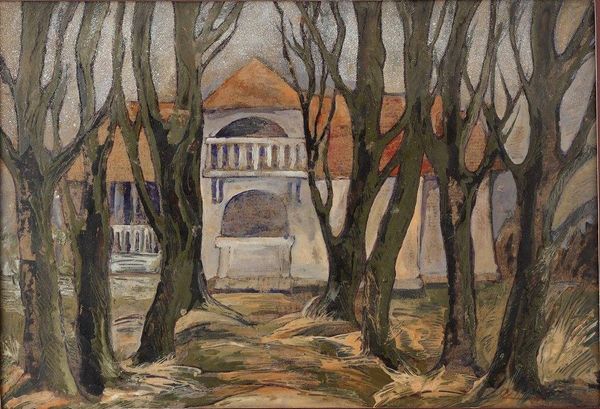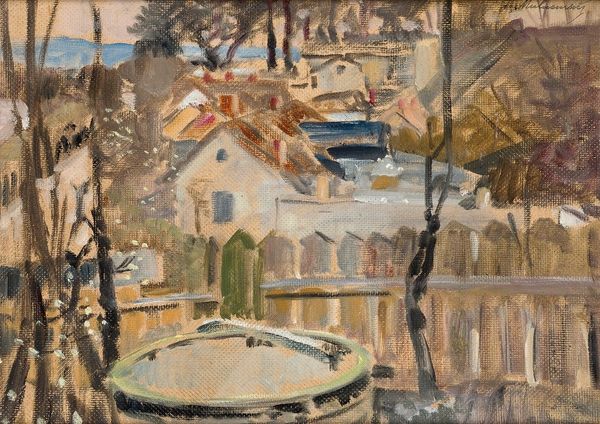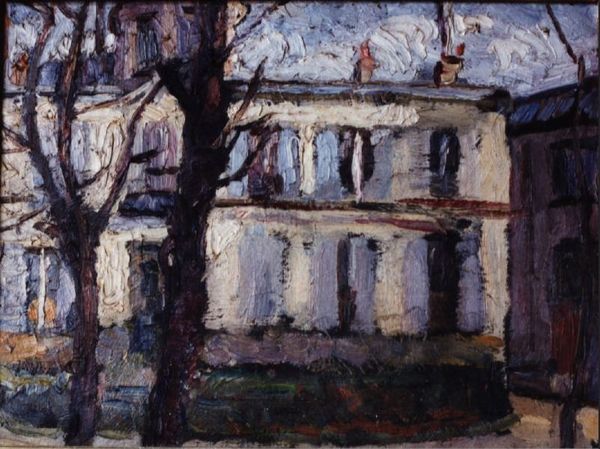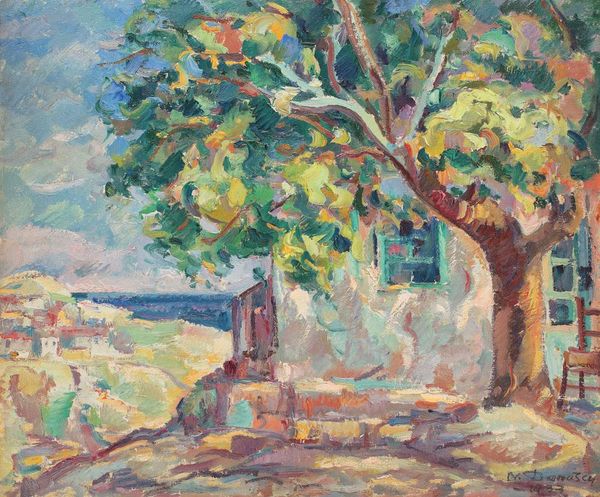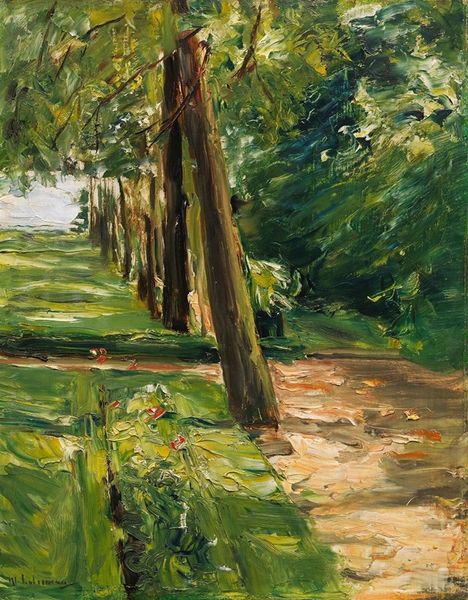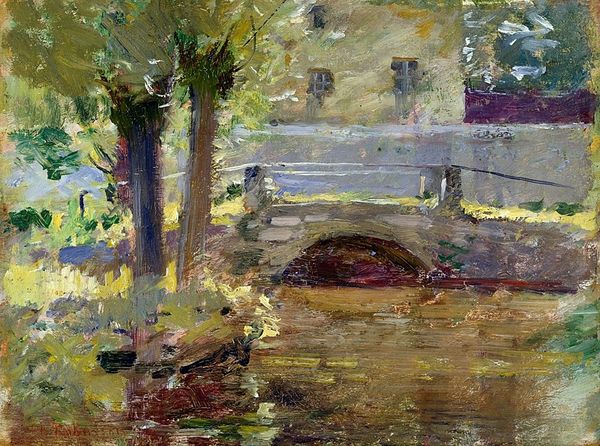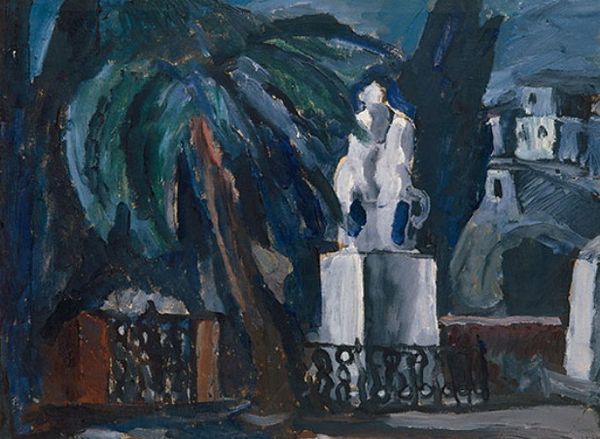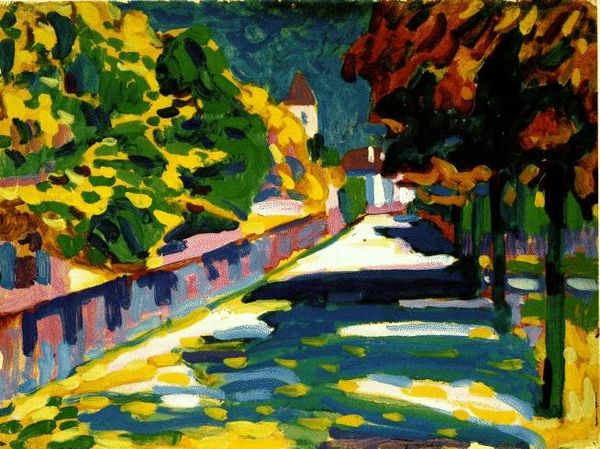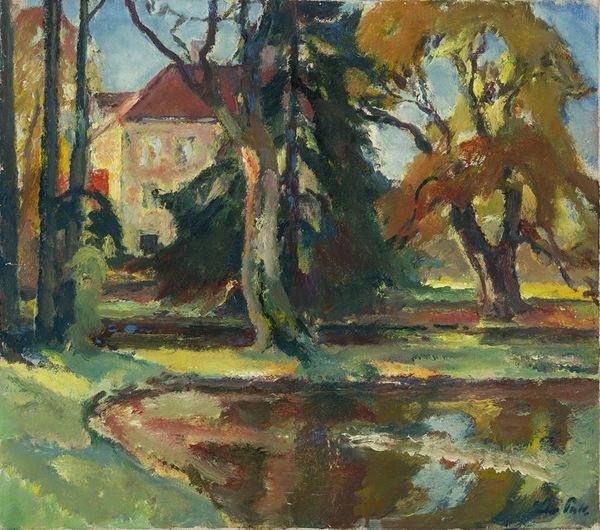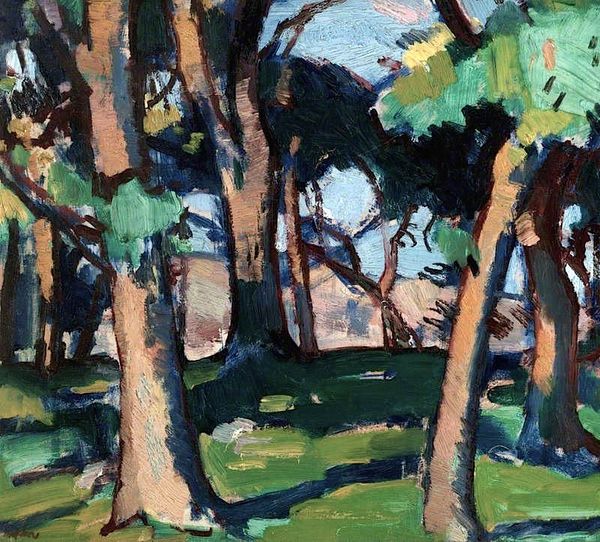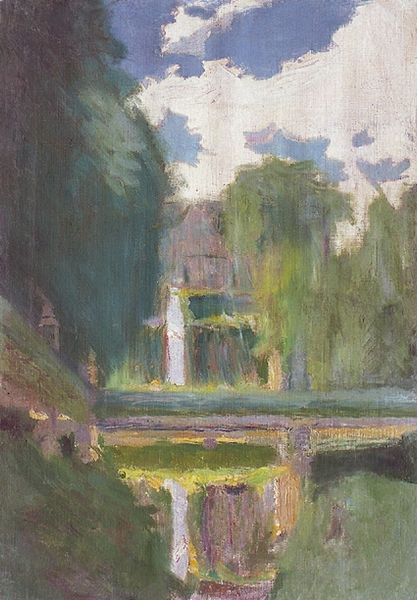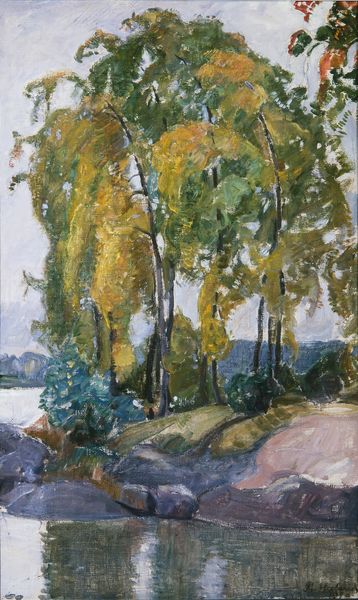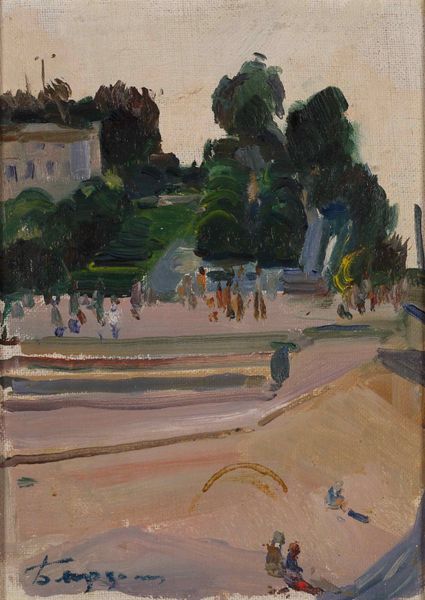
Copyright: Public Domain: Artvee
Tadeusz Makowski painted this winter landscape, portraying a church, likely in the early 20th century. Note the prominent dome, an architectural feature of the Orthodox church, which rises above the landscape as a beacon, a symbol of spiritual transcendence. The dome and its presence echoes the heavens, yet, it is firmly placed within the earthly realm, nestled amidst bare trees and snow-covered ground. This juxtaposition is not new. Consider the Pantheon in Rome, where the oculus—an opening at the dome's apex—mirrors this symbolic connection between the divine and the human. In both instances, whether in ancient Rome or in Makowski's depiction, the dome represents a point of intersection, a bridge between the tangible world and the intangible, the sacred. It embodies mankind's eternal quest for understanding and connection with higher powers. Across cultures, domes resonate as symbols of unity, wholeness, and the cosmos. In viewing Makowski's winter landscape, we are reminded of the enduring human impulse to find meaning and order in the world, to create symbols that reflect our deepest beliefs and aspirations.
Comments
No comments
Be the first to comment and join the conversation on the ultimate creative platform.
